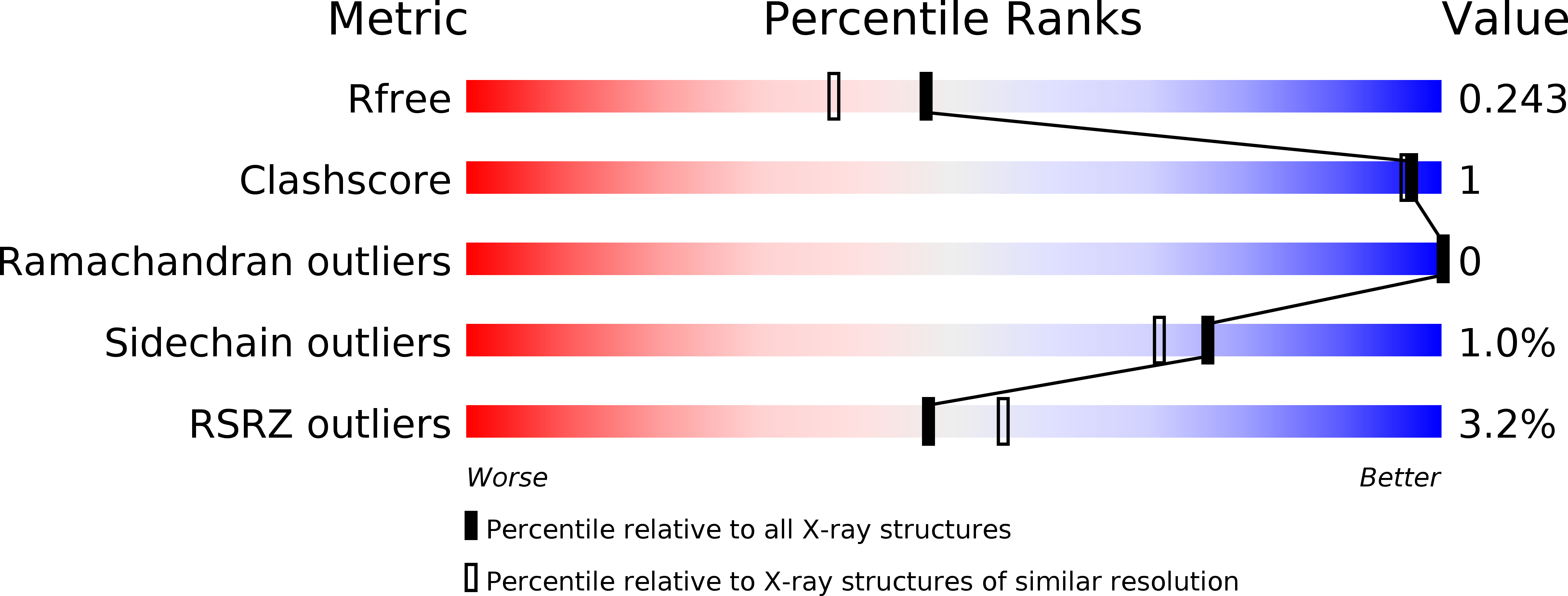
Deposition Date
2017-04-02
Release Date
2018-02-07
Last Version Date
2023-10-04
Entry Detail
PDB ID:
5VDF
Keywords:
Title:
Crystal Structure of Cu(I)-loaded yeast Atx1: Crystal Form II
Biological Source:
Source Organism:
Host Organism:
Method Details:
Experimental Method:
Resolution:
1.93 Å
R-Value Free:
0.24
R-Value Work:
0.19
R-Value Observed:
0.19
Space Group:
P 1 21 1


